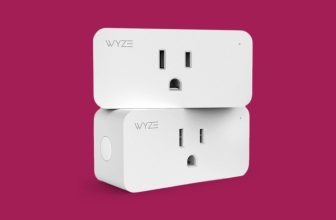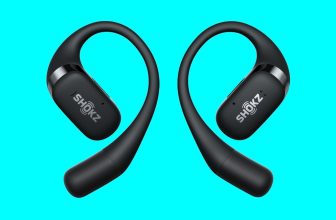
Zwift Hub Smart Cycling Trainer Review: An Affordable Way to Ride Indoors
Zwift will not be my pure habitat. Neither are any of the same digital coaching platforms that present stationary runners and cyclists with on-screen routes by means of unbelievable landscapes. As a Gen Xer whose early life included the uninspiring video gaming of Intellivision’s Astrosmash, I spent most of my play time exterior. When it comes to train, I nonetheless desire the outside to any digital world, however I additionally stay in a northern local weather the place winter temps usually dip under zero. It’s potential to trip in sub-zero air, but it surely won’t be everybody’s concept of enjoyable.
Zwift is right here to enable you struggle to your proper to keep cozy. The firm is greatest identified for its digital worlds—just like the tropical archipelago of Watopia and its subsequent spinoffs—that present inventive and colourful distractions for runners and cyclists to discover whereas sweating by means of their coaching applications. Now, Zwift has moved past software program and entered the laborious items house, providing its first-ever sensible coach, referred to as the Hub.
Direct-drive sensible trainers have been round for nearly a decade. These gadgets connect to your rear drivetrain, changing the rear wheel. As you pedal in a stationary place, they transmit your real-world effort to the digital coaching setting displayed on the app working on the cellphone, pc, or tv in entrance of you.
The expertise of driving on a sensible coach has advanced to the purpose that lots of the irritating connectivity kinks that initially outlined the expertise have been labored out. Most of right now’s sensible trainers present a seamless, realistic-feeling trip. The most high-end sensible trainers arguably present a extra calibrated setting than may ever be replicated exterior. They can precisely measure your energy output to inside a share level, they usually can register a most energy output of greater than 2,200 watts. They can present such clean connectivity that your mind nearly fails to register that you just aren’t actually on the earth displayed on the display. Some even bump and shake as you trip over digital cobblestones. These trainers price within the realm of $1,400.
The new Hub prices $500. So what are you giving up by paying so little? And extra importantly, what do you acquire with the Hub, apart from the lots of of {dollars} which might be nonetheless in your pockets?
One large distinction: The Hub comes with a preinstalled 8-, 9-, 10-, 11-, or 12-speed cassette to match the cassette of the bike you’ll use on the coach. This is a big benefit, particularly for somebody like me whose indoor bike is a decade-old Specialized S-Works Amira SL4, which is a ten-speed. Most different trainers include a preinstalled cassette or a large number of choices for extra fashionable groupsets. But in case your bike (like mine) has an older cassette that might not be suitable with the coach, you’d want to first purchase a cassette your self after which safe it in place with a sequence whip and cassette-locking software. Either that or lug the coach to the native store and have them set up the right cassette for you. With the Hub, you’ll be able to simply choose the correct cassette choice with out putting in something.
Setting up a sensible coach might be mind-numbingly irritating. While the Hub requires some wrenching, specifically attaching the rear and entrance toes to the rear and entrance legs of the coach with included nuts, washers, bolts, and a wrench, it’s a five- minute course of. All the elements are color-coded, and the directions are concisely spelled out within the accompanying guide, with some explanatory movies accessible through a QR code. After the legs are connected to the coach and you’re taking the rear wheel off your bike, the following step is to connect the bike by following the instructions for quick-release or thru-axle hubs, relying on what’s in your bike. (Both adapters are included.) After mounting the bike to the Zwift Hub through the suitable adapter, tightening the skewer, and aligning the chain, it is a matter of plugging the coach in and ready for the standing LEDs to flash blue, which implies that it’s prepared to pair to Zwift so you can begin exploring some digital terrain.
One vital be aware: The Hub doesn’t lock you into utilizing Zwift completely. It additionally works with digital coaching platforms like TrainerHighway, Wahoo SYSTM, Wahoo RGT, and Rouvy. All of those are subscription companies priced between $12 and $20 per thirty days; Zwift costs $15 month-to-month, and a subscription will not be included in the price of the Hub.






